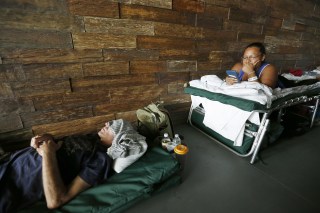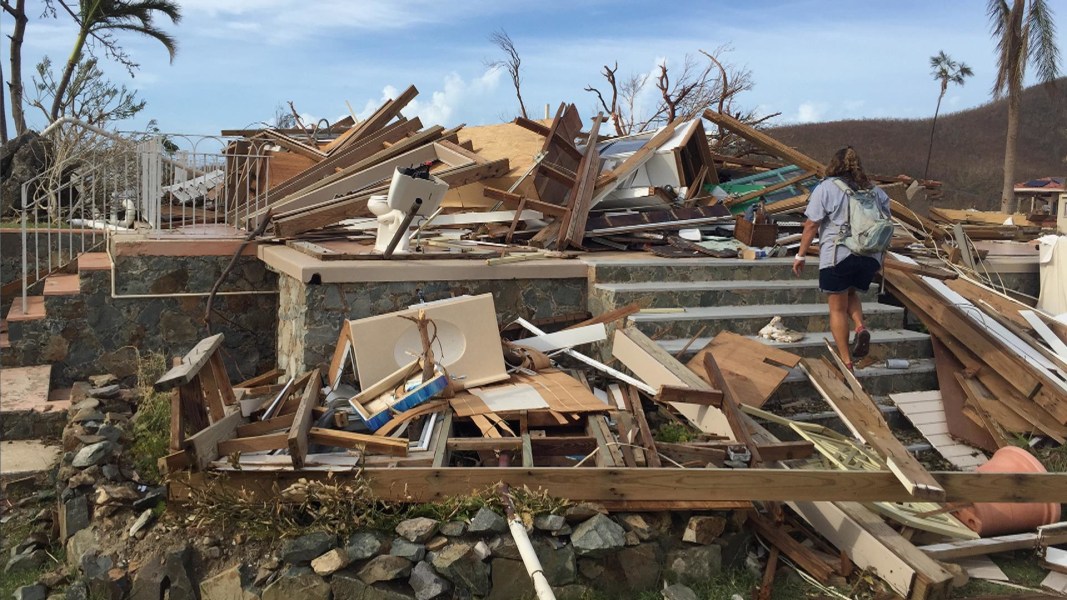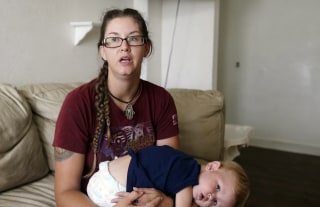Thanks to Dave Aronberg for his work on the WHIDDEN-NELSON coverup of the RICHARD SMITH hit-and=run of a fifteen year old child.
We need someone with guts, like Dave Aronberg as special prosecutor for St. Johns County corruption, starting with Sheriff DAVID SHOAR, who had his name changed from "HOAR" in 1994.

Gov. Scott gives Aronberg extra year to investigate Hendry sheriff
Daphne Duret Palm Beach Post Staff Writer
7:30 a.m. Thursday, Sept. 28, 2017 Palm Beach Post
Palm Beach County State Attorney Dave Aronberg
Florida Governor Rick Scott has given Palm Beach County State Attorney Dave Aronberg an additional year to look into allegations that Hendry County Sheriff Steve Whidden and one of his top deputies tried to cover up a convicted felon’s involvement in a hit-and-run crash that injured a teenage girl.
The governor last year assigned Aronberg’s office to look into claims of allegations of “misfeasance, malfeasance, and gross misconduct” against Whidden and Chief Deputy Sheriff Kevin Nelson. An officer in Whidden’s department claimed in a sworn statement in August 2016 that the two thwarted his efforts to investigate Richard Smith, a man the officer believed caused a crash that injured a 15-year-old girl walking to a school bus stop in Labelle on Sept. 11, 2015.
Prosecutors in the Hendry County Circuit asked the governor to give the case to prosecutors in another area because the state attorney for Hendry County has a working relationship with the sheriff and because one of the office’s chief assistant state attorneys is a former law partner of the attorney for the girl’s family, who is suing Smith’s insurance company.
Aronberg’s jurisdiction in the case was set to expire this Friday but he asked for more time to decide whether the case warranted criminal charges, according to Sept. 13 extension order from Scott’s office.
“The Assigned State Attorney has advised the Governor that the duties required by the previous executive assignment have not yet been completed as the case is still pending and under review,” reads the order, which extended Aronberg’s jurisdiction to Sept. 29, 2018.
So far, the only publicly released documents about the cover-up allegations are in the form of an August 2016 sworn statement that Hendry County sheriff’s deputy Vernon Speak gave as part of the girl’s lawsuit.
With a broken passenger-side rear-view mirror from a white Ford F-150 as his only evidence, Speak said that it took him and other officers nearly two weeks to track down Smith by watching for an F-150 traveling near where the incident occurred. They eventually made a traffic stop of Smith, who told them he had been driving in the area at the time of the accident and hit something that broke off his mirror. Smith told Speak he thought he’d hit a mailbox but found nothing when he returned to the area several times.
The deputy said he didn’t believe Smith’s story and began to confront him with the inconsistencies, but by then, Smith had called the sheriff personally on his cell phone. According to Speak’s 2016 sworn statement, Whidden called Speak before the deputy could question Smith further.
In Speak’s sworn statement, he also said the sheriff told Smith he didn’t have to show up for a later interview Speak had scheduled with him and was furious that the deputy kept questioning Smith.
“He was red in the face and angry and told me that I made him look like a [expletive] [expletive],” Speak said of a subsequent meeting with Whidden, according to the sworn statement.
At that meeting, Whidden and Nelson expressed their dismay that Speak had included Whidden’s name and contact with Smith in a report on the case, the sworn statement said. The two are also accused of failing to send the report to prosecutors after they decided to close the case.
Smith was never charged in traffic incident. At the time of the crash, he was just days away from beginning a 41-month federal prison sentence for his role in a scheme where he and three others pleaded guilty to charges they fraudulently claimed they were converting animal fat and vegetable oil into high quality renewable fuel so they could collect millions in bio-diesel tax credits. He is still in prison.
Citing the open investigation, Whidden and officials from his department have declined to comment to The Palm Beach Post about the matter, but Whidden previously publicly denied allegations of any wrongdoing in the case and said the case against Smith was closed because there wasn’t enough evidence against him.
Gov. Scott gives Aronberg extra year to investigate Hendry sheriff
EXCLUSIVE: Aronberg probe of Hendry sheriff’s alleged misconduct nears deadline
LOCAL By Daphne Duret - Palm Beach Post Staff Writer ...
Palm Beach County State Attorney Dave Aronberg has been assigned by Florida Gov. Rick Scott to investigate “misfeasance, malfeasance, and gross misconduct” allegations against Hendry County Sheriff Steven Whidden. (Bruce R. Bennett / The Palm Beach Post)
Posted: 1:22 p.m. Saturday, August 26, 2017
LABELLE —
On a Friday morning two years ago, just before sunrise, a 15-year-old girl ambled along a well-worn footpath in the grass on the north side of a sparsely tree-lined stretch of Nobles Road, heading toward her bus stop to get to school.
She would later tell Hendry County sheriff’s deputies that she never saw the pickup as it veered into the path directly behind her. It hit her hard enough that she fell over into a nearby ditch. She looked up in time to see a white truck speed away, but nothing more.
Less than two hours later, she sat in the school nurse’s office, bruised and swollen. Her parents were on their way, still reeling from the shock that their daughter was the victim of an apparent hit-and-run.
Their attorney says they were even less prepared for what happened next.
Within weeks, they learned their daughter’s case was the center of an alleged cover-up involving a convicted felon who owes the federal government millions for a bio-diesel fuel scheme and the Hendry County sheriff himself — a man whom Palm Beach County’s top prosecutor now holds the power to potentially put behind bars.
READ: Gov. Scott’s order assigning State Attorney Dave Aronberg to investigate Hendry County Sheriff Steven Whidden
“I expected to be sent home without a job,” Hendry County sheriff’s deputy Vernon Speak, the deputy assigned to the girl’s case, testified in a sworn statement last year when he was asked about a meeting he had with supervisors about his investigation. He said they were upset about the report he wrote regarding the alleged hit-and-run.
Their problem?
Speak had listed Hendry County Sheriff Steven Whidden by name in his report, not as the county’s top lawman, but as the prime suspect’s chief intercessor.
+ Hendry County Sheriff Steven Whidden photo PALM BEACH POST STAFF WRITER
Hendry County Sheriff Steven Whidden
In the sworn statement, which Speak gave on Aug. 10, 2016 to the girl’s attorney, the deputy laid out his version of how the investigation of the traffic incident and its aftermath proceeded:
With no eyewitnesses besides the girl, who could only say a white truck had hit her, Speak said he initially had few leads to pursue outside a passenger side mirror, left at the scene after it apparently broke off from the impact. He suspected the part belonged to a Ford truck, so he took it to Langford Ford in LaBelle.
Workers there were able to pinpoint the mirror as having come from a 2011-2014 Ford F-150, either an XLT or Lariat model. Deputies issued an alert for a white Ford F-150 fitting that description, checked with local repair shops and dealerships to see if anyone had come in asking for a new mirror of that type, and checked back with the 15-year-old for more potential clues after her parents brought her home from the hospital.
When that failed to produce any leads, Speak said he and another deputy helped investigators patrol for a potential suspect. A break in the case came 11 days after the Sept. 11, 2015 incident, when Speak and another deputy parked their cars near the scene just after 6 a.m. and watched a white Ford F-150 blow past a stop sign along the roadway.
They pulled the truck over and quickly identified the driver as Richard Smith, a 58-year-old man Speak would later learn was just days away from beginning a 41-month federal prison sentence for his role in a scheme where he and three others pleaded guilty to charges they fraudulently claimed they were converting animal fat and vegetable oil into high quality renewable fuel so they could collect millions in bio-diesel tax credits.
Speak’s side
In his 2016 statement, Speak said Smith seemed immediately agitated when he was pulled over, and behaved so aggressively he thought the two of them would come to blows. On Smith’s passenger side door was a seemingly brand new mirror. The part was conspicuously clean, Speak testified, while the rest of the truck was dirty.
Smith, Speak said, told him he was late for work in Everglades City and wanted to be let go immediately. But he admitted having hit something on the road during the day in question, according to Speak’s police report from September 2015. Smith said he had come back later and found garbage cans and a broken mailbox in the road and assumed that was what he’d hit, the report said.
But just as Speak was telling Smith there were no mailboxes at the side of the road, he heard his fellow deputy on the phone with someone who was asking to talk to him. When he got on the phone, Speak learned the sheriff himself was on the line, according to Speak’s sworn statement.
Speak said he explained to Whidden that he’d found a suspect in the hit and run, a third degree felony punishable by up to five years in prison.
“And he said, ‘Yeah, I just talked to him. He’s in a hurry to get to work. Can you get him out of there?’” Speak recalled the sheriff as saying, according to the statement.
Speak testified that he insisted to Whidden that he needed to talk to Smith for his investigation, but the sheriff was equally insistent in his command that Speak wrap up his conversation with Smith and “set something up for later.”
Speak said he promised he would, and after reading Smith his Miranda rights and asking him a few more questions, he let Smith go after Smith promised to come to the station and talk further to an investigator by 4 p.m. that day.
By the end of the day, Speak said, Smith never showed, so the deputy went home and completed a report on the incident. The next day, as he headed to the gun range, he found Whidden waiting for him outside. Angry.
Speak testified in his statement that Whidden told him he thought the deputy had understood from his phone call that the case was to go nowhere, and that he shouldn’t have pulled Smith out of the car and questioned him after Whidden told him to let the man go. “He was red in the face and angry and told me that I made him look like a [expletive] [expletive],” Speak said.
Speak testified he told Whidden that Smith had essentially confessed and agreed to come back to the station later to give a more thorough statement, but the deputy said Whidden in turn reiterated there would be no investigation and told Speak that he had personally told Smith not to come to the station.
According to Speak’s sworn statement:
The deputy and the sheriff briefly discussed the facts of the case, with the sheriff saying Smith came back to the scene and that no one could prove he intended to leave the scene of a crash with an injury, but Speak said he stuck to his assessment that he thought it was a viable case.
What made matters worse, Speak said, is that he had already filed his report by then. He said after Whidden read it the morning of their gun range encounter, the sheriff was “lit.” Speak said the sheriff never explained what his connection was with Smith.
“He just said he’s a good guy and he’s in a bad spot and he’s going to prison for something that’s not really fair, and this is going to make it harder for him,” Speak said.
Later, Speak said, he learned that a lieutenant had added a supplement to his report, saying that deputies were unable to prove the case “beyond a reasonable doubt” — a determination usually only made by prosecutors.
Palm Beach County role
The hit-and-run case was eventually referred to the state attorney for Hendry County, but there’s a dispute about how that happened. Whidden would later tell a Fort Myers television station that his office referred the case, but Steven Ramunni, the attorney for the victim’s family, told The Palm Beach Post the sheriff did so after Ramunni informed the state attorney’s office about the case.
Ramunni said the girl’s family received an anonymous call telling them that there was a report about their daughter’s case that they should request. He said that after the 20th Circuit State Attorney’s Office, which covers Hendry and three other counties, also decided not to seek charges against Smith, he took Speak’s report to the Florida Department of Law Enforcement and filed a lawsuit on behalf of the girl’s family against Smith’s insurance company.
Florida Gov. Rick Scott assigned the investigation to Palm Beach County State Attorney Dave Aronberg’s office last year after 20th Circuit State Attorney Stephen B. Russell decided his office had a conflict of interest because of its close working relationship with the sheriff’s office, according to Scott’s executive order. The order asks for the investigation because of allegations of “misfeasance, malfeasance, and gross misconduct” made against Whidden.
Palm Beach State Attorney’s office spokesman Mike Edmondson confirmed this week that Aronberg’s office was in charge of the potential prosecution in the case and that the investigation is still active. But he said the office’s policy is to not comment on active investigations.
Aronberg’s jurisdiction ends on Sept. 29, but he has until Tuesday to notify the governor if he needs more time, according to Scott’s executive order.
However, sources close to the case say FDLE officials have concluded their investigation.
Whidden’s response
In response to phone calls to Whidden from The Post, Hendry sheriff’s Capt. Susan Harrelle said Friday that Whidden had no comment, citing the open investigation.
Last year, in an interview with the Fort Myers-based CBS affiliate WINK News, Whidden denied the claims Speak made in his August 2016 statement, which was taken as part of the girl’s lawsuit against Smith’s insurance company.
Whidden in the televised interview described Smith as an acquaintance and said he didn’t know at the time of the hit-and-run investigation that Smith was a convicted felon on his way to the federal penitentiary in Miami-Dade County, where he remains.
“I have never in my life told a deputy to stop an investigation, never,” Whidden said, later adding: “We did everything by the book.”
If Smith’s case lands Whidden in legal trouble, it would mark just the latest in a history of trouble for Hendry County’s top lawmen.
In August 1980, a 15-year-old Clewiston teen stabbed Hendry County Sheriff Earl Sermon Dyess Sr. while Dyess was investigating what he thought was suspicious activity at a car dealership behind his home. Dyess’ son, Sermon Dyess Jr., took over his father’s job until 1993, when he pleaded guilty to helping his best friend and another friend smuggle 8,000 kilos of cocaine onto a ranch near Clewiston.
The younger Dyess was sentenced to 17 years in prison, but was released nearly a decade ago and lives in Clewiston.
According to the Hendry County Sheriff’s website, Whidden, a graduate of Naples High School, began his law enforcement career at the Albany Police Department in New York. After two years there, he transferred to the Hendry County Sheriff’s Office, spent six years there and worked another four years for the Clewiston Police Department before serving two years on a special DEA task force. He was elected Hendry County Sheriff in 2008 and won reelection last year with 60 percent of the vote.
During his three terms in office, Whidden has touted making cutbacks in his administrative offices to hire more deputies to patrol the streets. Six months after Smith’s traffic incident, Whidden announced his candidacy for reelection and listed among his accomplishments the placement of school resource officers in every public school in the county.






